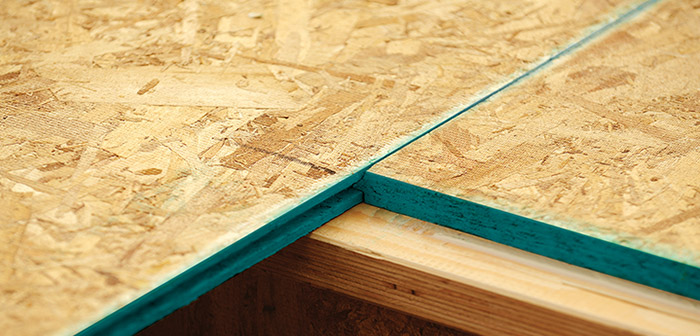
Both OSB and plywood are made by gluing and pressing wood together, although the process of doing so differs considerably. The manufacturing process of OSB involves cutting rectangular-shaped wood strands from logs and laying them in cross-oriented layers using high pressure and heat to cure the resins to make a solid-panel product with consistent quality.
This type of engineering and production process means that OSB can be made into longer panels than plywood. At West Fraser, we use OSB to manufacturer taller wall sheathing panels like TallWall, Windstorm and QuakeZone. These longer length panels provide builders and framers with additional advantages when compared to traditional 4×8 wall sheathing installed horizontally. The Home Innovation Research Center conducted air leakage tests that compared vertically installed TallWall sheathing to standard 4×8 panels. The tests revealed a sharp reduction in air leakage – up to 60% compared to 4×8 panels installed horizontally under the same conditions.
Plywood is made from thin sheets of veneer which are peeled from large logs using a lathe. The veneers are then cross-laminated and glued together using a hot press. Each layer is perpendicular to the underlying one. This means that plywood panels are lighter than OSB and may swell less when exposed to moisture, especially at the edges.
West Fraser manufacturers both OSB and plywood products which share many of the same strength and performance characteristics. Whether you choose OSB or Plywood on your next project, make sure to choose West Fraser.
